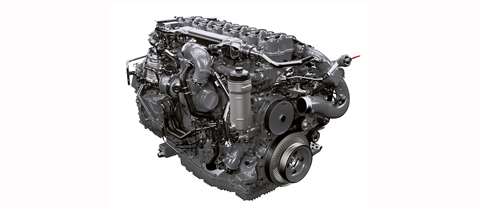Scania launches new 13 L gas engine
20 September 2021
Scania has introduced a new 13 L engine which can operate on either natural gas or biogas. The engine can run on either compressed natural gas (CBG/CNG) or liquified natural gas (LBG/LNG).
 The new 13 L gas engine from Scania
The new 13 L gas engine from Scania
While biogas has been successfully used by city and suburban buses, cars and light transport, Scania states the fuel has been less successful with heavy-haulage, long-distance vehicles. But using technology to cool the biogas into an energy-dense liquified state has opened up new areas of opportunity.
“Biogas will be one of the key tools for decarbonisation of heavy-duty transport – especially for intercity and long-distance operations. Half of Europe’s heavy duty gas fleet could be powered by biogas in 2025,” said Jonas Strömberg, Sustainability director, Scania Buses & Coaches.
Having the capability to use biogas creates a series of advantages, in that it can be a fossil-free fuel, renewable, and locally produced, helping to reduce emissions.
“Biogas is not only one of the fuels with the lowest CO2 emissions – it also solves local waste problems, creates local jobs and brings carbon and nutrients back to the soil. It is circular economy in practise,” Strömberg added.
The new 13 L engine offers the same power and torque of an equivalent diesel engine. The fuel also needs no additives, helping to reduce operating costs.
The new engine is available as an option on the recently-introduced high-floor Scania K-chassis buses. The K-chassis also includes a new front axle with an increased load capacity of 500 kg (1100 lb.).
STAY CONNECTED




Receive the information you need when you need it through our world-leading magazines, newsletters and daily briefings.
POWER SOURCING GUIDE
The trusted reference and buyer’s guide for 83 years
The original “desktop search engine,” guiding nearly 10,000 users in more than 90 countries it is the primary reference for specifications and details on all the components that go into engine systems.
Visit Now
CONNECT WITH THE TEAM










